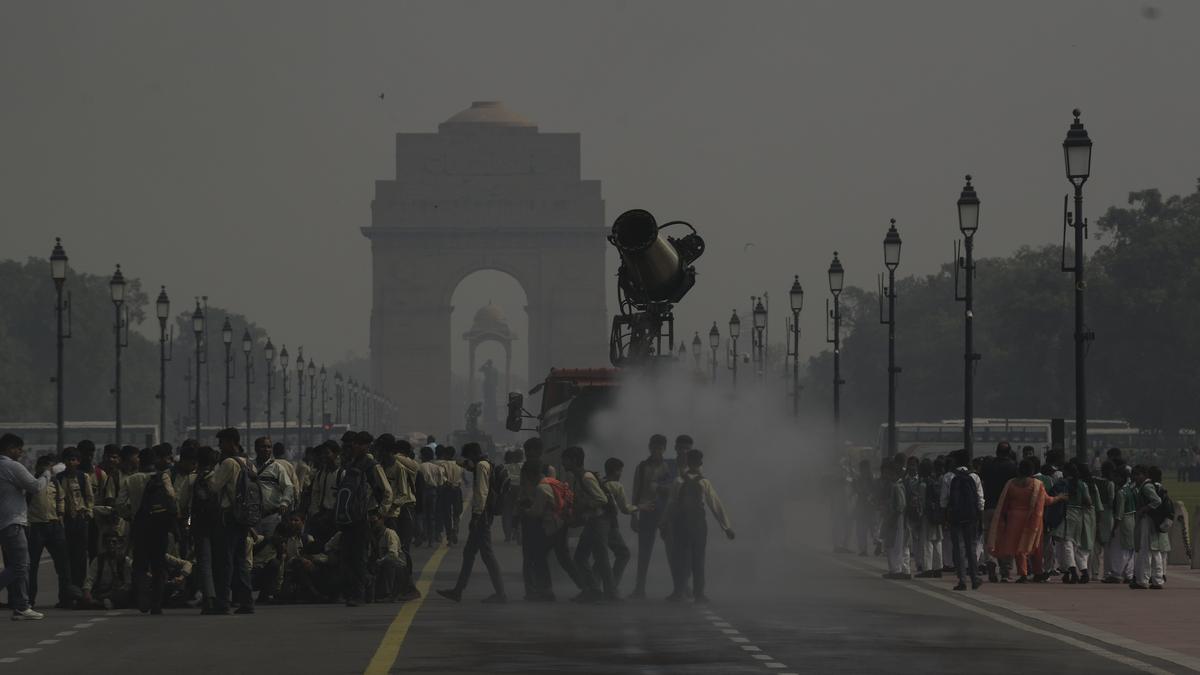
Delhi’s air quality ‘very poor’ due to calm winds
The Hindu
Delhi's air quality worsens to 'very poor' due to calm winds, vehicular emissions, and high PM levels, impacting health.
After a two-day gap, Delhi’s air quality turned ‘very poor’ again on Sunday (October 27, 2024) as calm winds prevented dispersion of pollutants. Some areas in the national capital recorded ‘severe’ pollution levels.
Delhi’s 24-hour average Air Quality Index (AQI) was recorded at 355 at 4 p.m. as against 255 on Saturday (October 26, 2024), Central Pollution Control Board (CPCB) data showed.
Data from 37 of the city’s 40 monitoring stations was shared by the CPCB. It showed that three stations -- Bawana, Burari and Jahangirpuri -- recorded ‘severe’ air quality.
The air quality was also ‘very poor’ in Delhi’s neighbouring areas such as Greater Noida, Ghaziabad and Noida, and ‘poor’ in Faridabad and Gurugram.
Under the Graded Response Action Plan (GRAP), a set of emergency measures to control air pollution in the Delhi-NCR region during winter, air quality is categorised into four stages: Stage I - Poor (AQI 201-300); Stage II - Very Poor (AQI 301-400); Stage III - Severe (AQI 401-450); and Stage IV - Severe Plus (AQI above 450).
According to the India Meteorological Department (IMD), wind speed in the city was recorded at 0 kmph. Favourable wind speed had improved Delhi’s air quality from ‘very poor’ to ‘poor’ over the last two days.
The prominent pollutants in Delhi on Sunday (October 27, 2024) were PM10 and PM2.5, according to the CPCB. The PM2.5 level was recorded at 110.6 micrograms per cubic metre at 5 p.m., the data showed. PM2.5 is fine particulate matter capable of penetrating deep into the respiratory system and triggering health problems.













